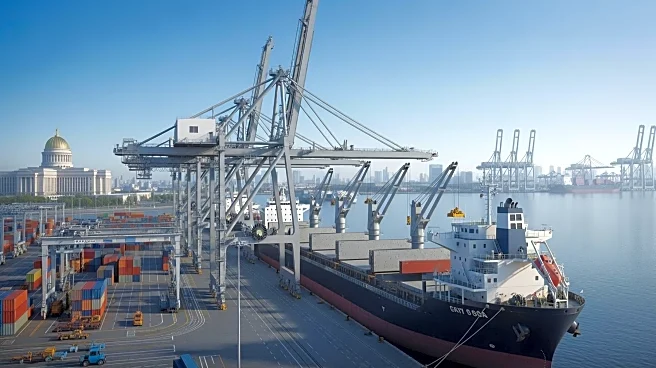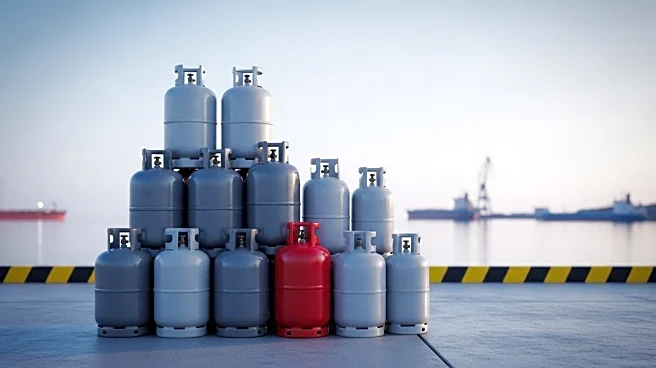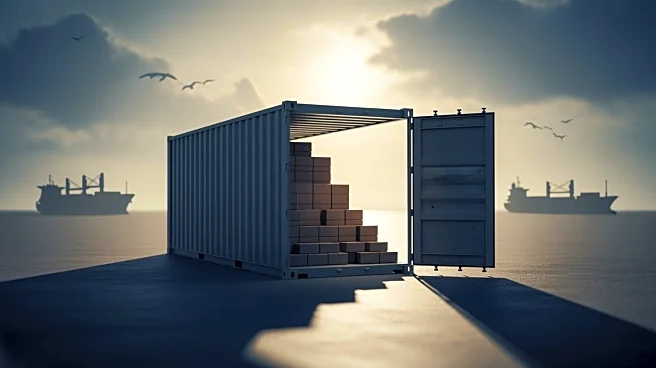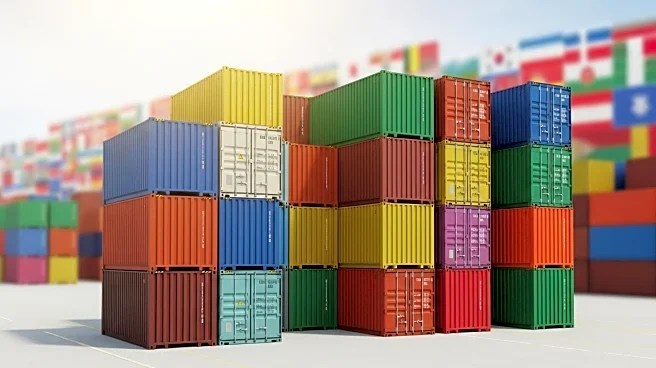What's Happening?
The U.S. port infrastructure has seen significant progress due to federal investments, particularly through the Infrastructure Investment and Jobs Act (IIJA) of 2021. This act allocated $450 million annually to the Port Infrastructure Development Program,
nearly doubling previous funding levels. The American Society of Civil Engineers (ASCE) recently awarded ports a 'B' grade in its Report Card for America's Infrastructure, marking the highest grade for this category. Despite challenges from the COVID-19 pandemic, ports have demonstrated resilience and adaptability, handling more cargo in 2022 than pre-pandemic levels. However, the American Association of Port Authorities highlights that the Port Infrastructure Development Program is oversubscribed, with infrastructure needs estimated at $38 billion through 2033.
Why It's Important?
Ports are crucial to the U.S. economy, contributing nearly $3 trillion to the GDP and supporting 22 million jobs. The progress in port infrastructure is vital for maintaining efficient supply chains and supporting international trade. However, the oversubscription of funding programs indicates a significant gap between available resources and actual needs. This gap could hinder the ability of ports to upgrade and maintain essential infrastructure, impacting economic growth and competitiveness. Sustained investment is necessary to ensure ports can continue to serve businesses and consumers effectively, while also adapting to challenges such as natural disasters and climate change.
What's Next?
To address the funding gap, Congress is encouraged to maintain or increase funding levels for port infrastructure programs. The Trump Administration is urged to fulfill promises made in the Water Resources Development Act of 2020 by increasing allocations from the Harbor Maintenance Trust Fund. Additionally, ports are focusing on innovations such as equipment electrification to improve energy efficiency and reduce environmental impact. Long-term infrastructure funding and public support are essential for continued progress and adaptation to future challenges.
Beyond the Headlines
The long-term implications of port infrastructure development include potential shifts in energy use practices and increased resilience to climate-related disruptions. As ports invest in modernized equipment and training programs, there is an opportunity to enhance workforce skills and improve operational efficiency. The integration of new technologies and better asset management practices could lead to more sustainable and effective port operations, benefiting both the national and global economies.













